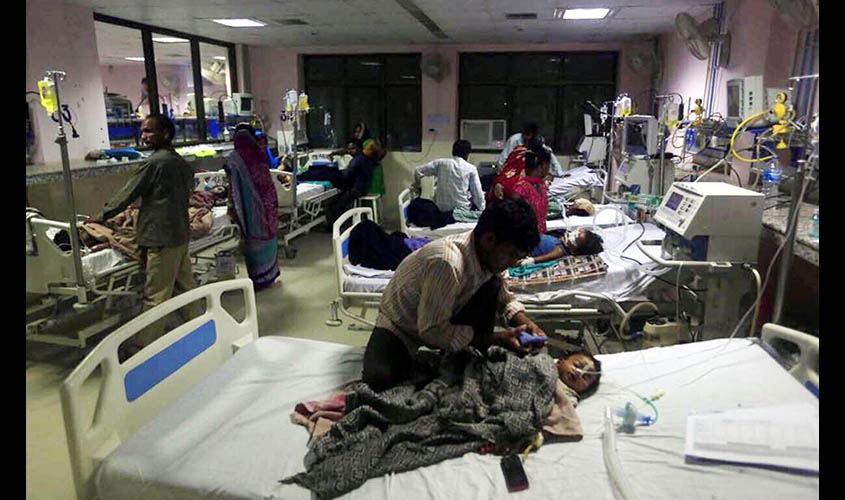The deaths of children in Gorakhpur may have led to public outrage, but the battle against encephalitis in the region is, perhaps, one of the oldest battles against a disease in this part of the world.
Encephalitis, which first made its presence felt in Gorakhpur in 1977, remains the biggest child killer—with or without oxygen. Hundreds of children lose their lives to the deadly virus every year.
According to official records, over 25,000 children have died due to encephalitis in the past four decades. The figures could be higher since a large number of cases do not even reach the hospitals and go unrecorded. The alarm bells, however, began ringing in 2005 when 1,344 children died in Uttar Pradesh alone.
In 2007, a vaccination programme was launched with drugs imported from China, but apparently had no impact because the cold chain of the vaccine was broken at several places rendering it ineffective, according to medical experts.
BRD Medical College (BRDMC) hospital is the only hospital in a 300 sq km stretch of the region with facilities to treat encephalitis and similar infectious diseases.
The encephalitis virus affects children mainly in eastern UP, parts of Bihar and Nepal and patients from all these places converge on BRDMC, which is the biggest medical facility in the region.
Gorakhpur has been the main treatment centre of Japanese encephalitis (JE) and acute encephalitis syndrome (AES).
Both kinds of encephalitis are viral infections that affect the brain, leading to coma and causing death. At times survivors are left with serious disabilities, mental and physical.
In April this year, much before the onset of monsoon, the Yogi Adityanath government had declared 20 districts of eastern UP as “encephalitis sensitive”.
“Ironically, this year, encephalitis struck earlier than expected and we had 128 patients in BRD Medical College in April itself. The state government had planned a massive immunisation drive and even a training programme for doctors at the primary health centre level,” said a doctor at BRDMC, wishing not to be named. The doctor said that the main problem with encephalitis patients is that they seek medical care too late.
“When the first symptoms appear, the children are treated by local doctors, even quacks. Since the initial symptoms are like that of flu—mild fever, pain in muscles and fatigue—the parents do not take it seriously. It is only when the child reaches a stage where he or she is likely to slip into coma that the patient is brought to BRDMC,” the doctor explained.
It is common for BRDMC to report about 10 daily deaths due to encephalitis in the monsoon season.
“Eastern UP is marked by backwardness and illiteracy. People are not aware of the importance of hygiene and this makes children more susceptible to virus attacks,” said Dr G.K. Shahi, a private medical practitioner in Gorakhpur. Dr K.P. Kushwaha, former principal of BRDMC, underlined the need for encephalitis management centres and volunteers at the village level to create awareness.

